Shortbread Biscuits
Biscuits...But Short
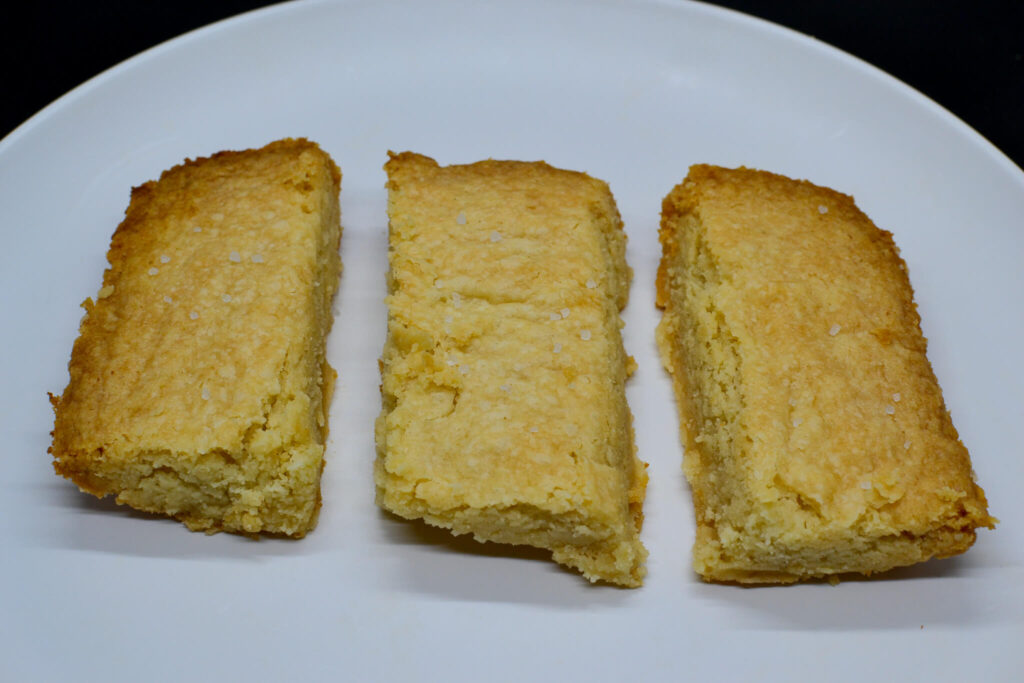
What Are Shortbread Biscuits?
Shortbread biscuits are traditional Scottish cookies made from a simple mixture of butter, sugar, and flour, resulting in a crumbly and buttery texture. They are often enjoyed plain or with a light dusting of sugar, and can be shaped into rounds, fingers, or various decorative forms.
Ingredients For Shortbread Biscuits

Refrigerated
1 cup unsalted butter (2 sticks), at room temperature

Grocery
1/2 cup granulated sugar
1 teaspoon vanilla extract
2 cups all-purpose flour
1/4 cup cornstarch

Spices
1/2 teaspoon salt
How To Make Shortbread Biscuits
Step 1
Mix Dry Ingredients

First, we prepare the dry ingredients. Start by sifting the flour. Sifting helps remove lumps and makes the flour light and airy. It ensures that our shortbread biscuits have a delicate and crumbly texture.
I used a mesh strainer from a set I had, but I’m considering investing in a proper flour sifter one day for even better results.

When sifting flour, you’re breaking up any clumps and aerating it. This is important because it helps ensure that the flour incorporates smoothly into the dough, preventing any unpleasant lumps in your final biscuits.
Using a fine-mesh sieve or a flour sifter, sift the flour into a large mixing bowl. This process not only removes any potential impurities or larger particles but also helps in achieving a more consistent and even texture in your dough.

Once you’ve sifted the flour, the next step is to add the cornstarch and salt.
Cornstarch is a key ingredient in shortbread biscuits as it helps to create a softer, more tender texture. The cornstarch interferes with the formation of gluten in the flour, resulting in a crumbly, melt-in-your-mouth consistency. Measure out the cornstarch carefully and add it to the bowl with the sifted flour.
Salt might seem like a minor addition, but it plays a crucial role in baking. It enhances the flavors and balances the sweetness of the biscuits. Use fine salt for this recipe, as it will disperse more evenly throughout the dough. Add the salt to the bowl with the flour and cornstarch.

Now that all the dry ingredients are in the bowl, it’s time to mix them together. Use a whisk or a spoon to thoroughly combine the flour, cornstarch, and salt. This ensures that the cornstarch and salt are evenly distributed throughout the flour, which is crucial for the consistency and flavor of the biscuits. Take your time with this step to make sure everything is well mixed.
Once the dry ingredients are mixed, set the bowl aside. This step of preparing and combining the dry ingredients sets the foundation for our shortbread biscuits. With the dry ingredients ready, we can now move on to preparing the wet ingredients.
Step 2
Make Butter Mixture

Next, we move on to the wet ingredients. Place two sticks of unsalted butter into your mixing bowl. The butter should be at room temperature to ensure it mixes smoothly and evenly.
The temperature of the butter is crucial for this recipe. If the butter is too cold, it won’t mix well with the sugar, leading to an uneven texture. If it’s too warm, the butter can start to melt, and the dough can become too greasy. Room temperature butter should be soft enough to make an indentation with your finger but not so soft that it appears oily or melted.
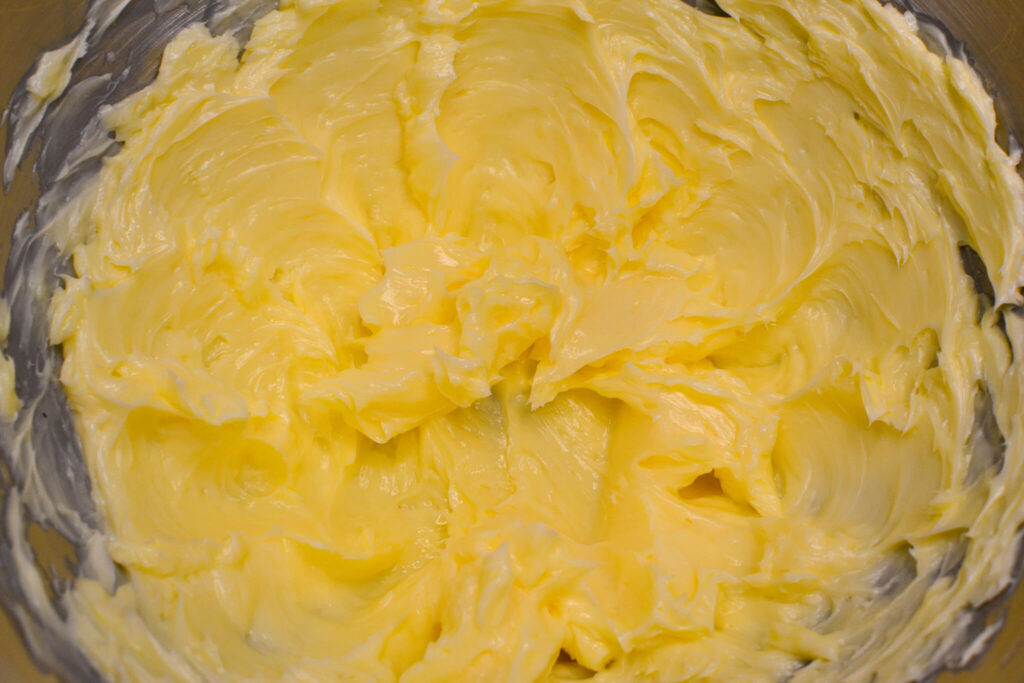
Use a hand mixer or stand mixer to stir the butter until it becomes creamy. Creaming the butter means beating it until it is smooth, light, and fluffy. This process incorporates air into the butter, which helps give the biscuits their light and delicate texture. It usually takes a few minutes of mixing at medium speed to achieve the right consistency.
 \
\
Gradually add the granulated sugar to the butter, mixing until the mixture is light and fluffy. This step is important because it further incorporates air into the mixture. The sugar crystals create little pockets of air as they are beaten into the butter, which helps the biscuits to rise and gives them a tender texture.
Add the sugar a little at a time, continuing to mix until it is fully incorporated. The light and fluffy mixture should be pale in color and have a smooth consistency. As you mix the butter and sugar, make sure to scrape down the sides of the bowl periodically to ensure everything is well combined. This helps prevent any unmixed butter or sugar from clumping at the bottom of the bowl.
Once the butter and sugar are fully creamed together, you should have a light, fluffy mixture that is ready to be combined with the dry ingredients. The creaming process is a crucial step in achieving the perfect texture for your shortbread biscuits. It’s important to take your time and ensure that the butter and sugar are thoroughly combined.
Step 3
Combine Dry and Buttered Ingredients
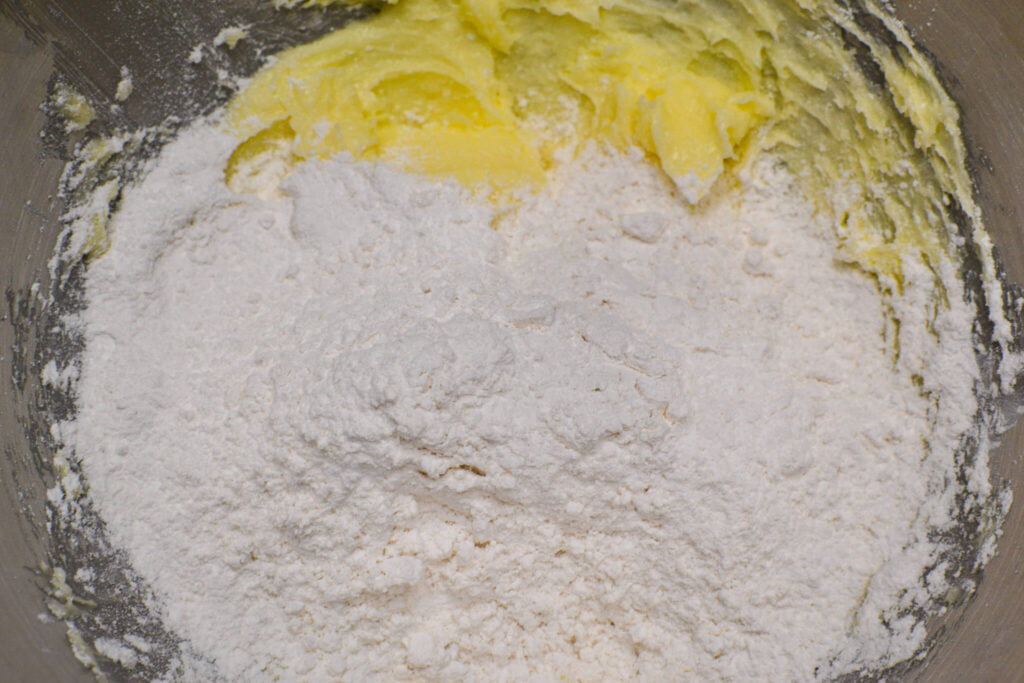
Now, let’s bring the dry and wet ingredients together. Slowly add the dry ingredients to the butter and sugar mixture. Mix on low speed to avoid overworking the dough.
Overworking the dough can make the biscuits tough, so it’s important to mix just until the ingredients are combined. When you add the dry ingredients to the butter mixture, do so gradually, about a third at a time. This helps to incorporate the flour mixture evenly without overwhelming the butter and sugar mixture. Mix on low speed until the dry ingredients are just combined with the wet ingredients. Overmixing at this stage can develop the gluten in the flour, which can lead to tougher biscuits.
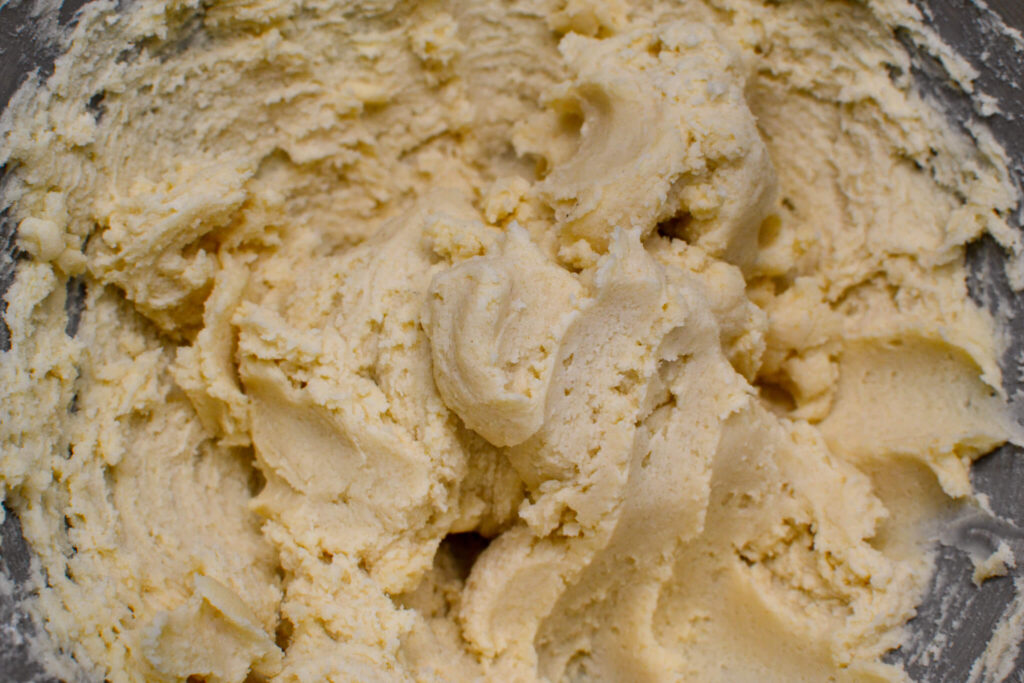
Mix on low speed until the dry ingredients are just combined with the wet ingredients. Overmixing at this stage can develop the gluten in the flour, which can lead to tougher biscuits.

Once the flour mixture is fully incorporated, add the vanilla extract. Vanilla extract adds a lovely flavor to the biscuits and enhances the overall taste. Measure out the vanilla extract carefully and add it to the dough. Continue to mix until everything comes together to form a dough. The dough should be soft and easy to shape into a ball without being too sticky. If the dough is too crumbly, you can add a little more butter; if it’s too sticky, add a bit more flour.

At this point, you should have a smooth, cohesive dough that is ready to be pressed into the baking dish. The dough should not be sticky to the touch, but it should hold together well when pressed. If the dough feels too dry and is falling apart, you can add a small amount of water or milk, a teaspoon at a time, until it reaches the right consistency. If the dough is too sticky, add a little more flour, a tablespoon at a time, until it is easy to handle.
Once the dough is ready, shape it into a ball and wrap it in plastic wrap. Let the dough rest in the refrigerator for about 30 minutes. This rest period allows the flour to fully hydrate and the butter to firm up slightly, making the dough easier to handle and resulting in a better texture for the final biscuits.
Step 4
Bake Biscuits
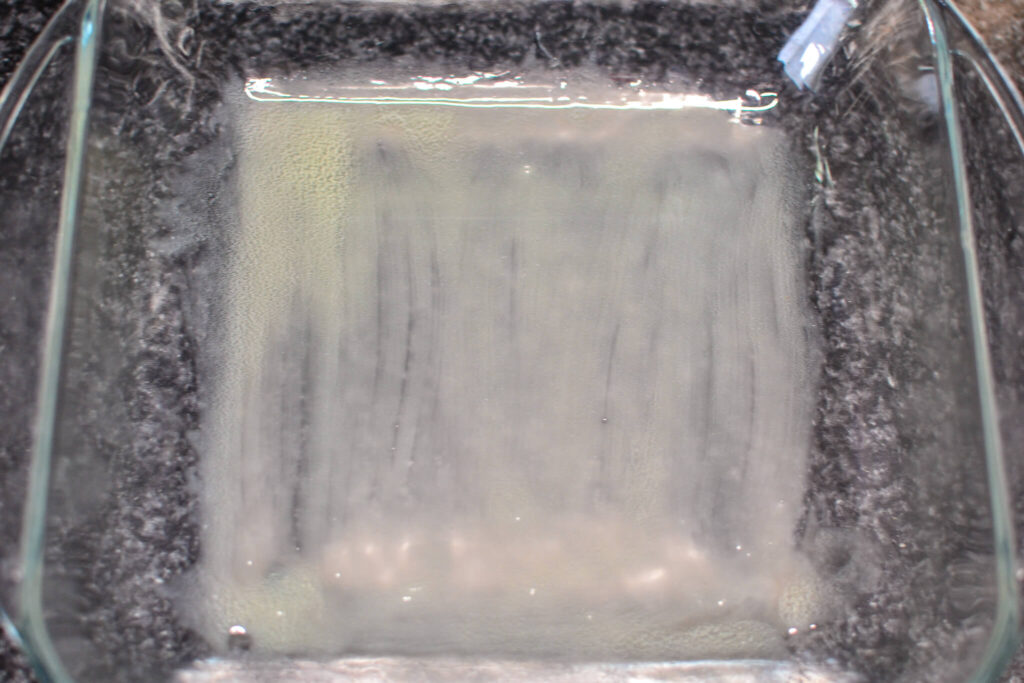
For baking, we will use an 8×8 inch baking dish. Butter the dish generously to prevent sticking. This ensures that the biscuits come out of the dish easily after baking.
Once the dish is prepared, transfer the dough into it. Press the dough down evenly with your hands or a spatula. Making sure the layer is even is important for uniform baking. An even layer will ensure that the biscuits bake evenly and have a consistent texture throughout.

Once the dish is prepared, transfer the dough into it. Press the dough down evenly with your hands or a spatula. Making sure the layer is even is important for uniform baking. An even layer will ensure that the biscuits bake evenly and have a consistent texture throughout.

Now, it’s time to bake! Preheat your oven to 325°F (163°C). Place the baking dish in the oven and bake for 30-35 minutes, or until the edges are golden brown. Baking at a lower temperature helps the biscuits cook through without browning too quickly. The slow baking process ensures that the biscuits maintain their delicate texture.
Once baked, remove the dish from the oven and let it cool for about 10 minutes. This initial cooling allows the biscuits to set slightly, making them easier to handle. After the initial cooling, transfer the biscuits to a wire rack to cool completely. Cooling on a wire rack prevents the biscuits from becoming soggy by allowing air to circulate around them.
Step 5
Enjoy Your Shortbread Biscuits!

Finally, let’s cut and serve our biscuits. Once the biscuits have cooled completely, use a sharp knife to cut them into even rectangles. The biscuits should be firm yet crumbly, with a delicious buttery aroma. Cutting them into rectangles gives them that classic shortbread look. Arrange the biscuits on a plate and serve. They are perfect with a cup of tea or coffee, and their buttery, crumbly texture makes them a delightful treat for any occasion.
Enjoy!

Ted Lasso

Inspiration
Ted Lasso’s Biscuits

More About Shortbread Biscuits
Tips for Perfect Biscuits
- Room Temperature Butter: Make sure your butter is at room temperature before you start. This ensures it creams properly with the sugar.
- Sift Your Flour: Sifting the flour helps create a light, airy texture in your biscuits.
- Don’t Overmix: When combining the dry and wet ingredients, mix just until combined to avoid overworking the dough.
- Cool Completely Before Cutting: Let the biscuits cool completely before cutting to ensure clean, even slices.

